(单词翻译:单击)
Much like Isaac Newton imagined when he gave his famous “shoulders of giants” quote, our modern civilizations owe a great deal to those which came before us. While examples like the Sumerians or Egyptians are deeply ingrained in nearly everyone’s minds, there are a number of other civilizations which have been largely forgotten. Here are 10 of them.
正如艾萨克·牛顿在提出其“巨人的肩膀”名言时所设想的一样,我们的现代文明也从先前的诸文明中获益良多。虽然诸如苏美尔或者埃及文明的例子已经深入人心,但仍有为数不少的文明基本上是被忘却了的。这里列举10个如下。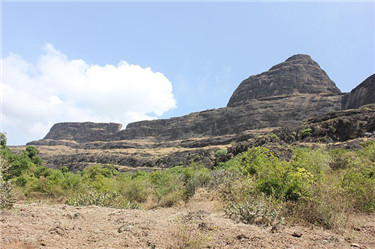
Photo credit: Bhushan Kotakar
图片引自: Bhushan Kotakar
10、Hattian Civilization
赫蒂文明
The Hattians were a civilization which inhabited the area of present-day Anatolia, Turkey from the 26th century to around the 18th century B.C. Believed to be the earliest urban settlers of the area, their existence can be traced to 24th-century Akkadian cuneiform tablets. Most archaeologists believe that they were indigenous to the area preceding the more famous Hittite civilization, which arrived in the 23rd century B.C. The two cultures slowly merged together, with the Hittites adopting a variety of Hatti religious beliefs and practices. Many of the largest Hittite settlements, such as Alaca Hoyuk and Hattusa, are believed to have originally been Hattian.
赫蒂文明位于今土耳其安纳托利亚地区,存在于公元前26世纪至约18世纪。他们是该地区最早的城市居民,其存在的证据可追溯至公元前24世纪的阿卡德楔形文字石碑中。大多数考古学家认为,赫蒂人比更为闻名的赫梯人更早存在于这一地区,后者于公元前23世纪来到这里。随着赫蒂人采纳了许多来自赫梯的宗教信仰和实践习惯,两大文明慢慢地融合在了一起。赫梯人的许多大型定居点,诸如阿拉卡·郝予克(Alaca Hoyuk)以及哈兹萨(Hattusa),确信最初曾是赫蒂人的。
While they had their own spoken language, no evidence of a written form of the Hatti language has ever been found. It’s likely that they were multilingual, perhaps to facilitate trade with their Assyrian partners. In fact, most of what we know about the Hattians comes from the widespread adoption of their culture by the Hittites. Their population probably existed as a majority for decades—if not centuries—while they were under the aristocratic rule of the Hittites, before they eventually faded away into obscurity.
虽然他们有自己的口头语言,但并未发现过有关其文字语言的证据。他们有可能是多语言的,或许是为了促进与其亚述(Assyrian)伙伴们之间的贸易往来。事实上,我们对赫蒂人的所知大部分来自于赫梯人对其文化的广泛采用。赫蒂的人口数量或许曾在几十年中占据多数——如果没到上百年的话——然而却是在赫梯贵族们的统治之下,直至最终在历史的长河中晦暗下去。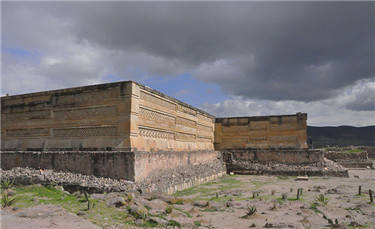
Photo credit: Rod Waddington
图片引自:Rod Waddington
9、Zapotec Civilization
萨博特克文明
While most people are familiar with the Aztecs and the Maya of Mesoamerica, the people known as the Zapotec remain relatively obscure. Among the first people in the area to use agricultural and writing systems, they also built one of the earliest recognized cities in North America—Monte Alban. Founded in the fifth century B.C., the city was home to a maximum of 25,000 citizens and lasted for over 1,200 years. In Monte Alban, a privileged class made up of priests, warriors, and artists ruled over the lower classes.
相较于许多人对中美洲 阿芝特科(Aztecs)及玛雅(Maya)的熟悉来说,一支称为 萨博特克(Zapotec)的文明显得生涩了许多。他们不仅是这一地区最早进行农业耕作、使用书写系统的文明之一,同时也修建了北美地区最早的城市——Monte Alban。[译者注:地理划分上“中美洲”只是一个地区的概念而算不上一个“洲”。Zapotec文明及其中心城市Monte Alban位于今墨西哥南部,在地理上属于“中美”范畴,但按“七大洲”概念则属北美] 该城建于公元前5世纪,最多可容纳2万5000名市民,存续超过1千200年之久。在Monte Alban城,由牧师、战士及艺术家组成的特权阶级统治着其他相对低级的阶层。
Like many of the civilizations of Mesoamerica, the Zapotecs subjugated the surrounding areas through a mix of warfare, diplomacy, and tribute. The sudden downfall of their culture seemed to have no reason, and their largest city was mostly left intact, though it was eventually ruined by years of abandonment. Some scholars believe that a failure of their economic system may have pushed the Zapotecs to find work elsewhere. The rest of the population grouped together into various city-states, which proceeded to fight each other (as well as outside forces) until they were no more.
同中美洲地区许许多多的其他文明一样,萨博特克也通过包括战争、外交和进贡在内的方式征服了周边地区。这支文明的衰落看起来毫无缘由,而且他们最大的城市也基本上是完好地遗留了下来,虽然由于多年的弃置,最终还是损毁了。一些学者认为,他们失败的经济体系,或许使得萨博特克人不得不到其他地区寻找工作。余下的人口组成了大量的城邦,并且相互交战(同时也与外部势力交战)直至灭亡。
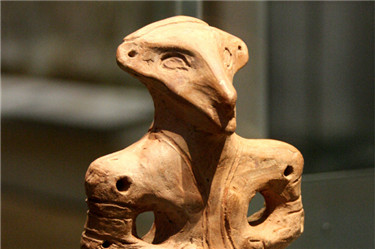
Photo credit: Michel wal
图片引自: Michel wal
8、Vinca Civilization
温卡文明(长春花文明)
Europe’s biggest prehistoric civilization, the Vinca, existed for nearly 1,500 years. Beginning in the 55th century B.C., they occupied land throughoutSerbia and Romania. Named after a present-day village near the Danube River, where the first discoveries were made in the 20th century, the Vinca were a metal-working people, perhaps even the world’s first civilization to use copper (they also excavated the first mine in Europe).
欧洲最大的史前文明,温卡,存续近1500年之久。从公元前55世纪开始,他们占据了遍及叙利亚和罗马尼亚的土地。首次发现于20世纪,并以发现地,多瑙河附近一当代小镇的名字命名。温卡人是一个从事金属加工的民族,他们或许是世界上最早使用铜的文明(他们同样采掘出了欧洲的第一桶矿产)。
Though the Vinca people had no officially recognized form of writing, examples of proto-writing, symbols which don’t actually express language, have been found on various stone tablets which date as far back as 4000 B.C. In addition, they were artistic and fond of children; archaeologists have found various toys, such as animals and rattles, buried among the other artifacts. They were also extremely organized—the houses of the Vinca civilization had specific locations for trash, and the dead were all buried in a central location.
虽然温卡人的存在无法从文字、类文字图样、甚至那些算不上语言的符号中得到正式承认,但的确发现有许多的石碑可以作证其存在,这些石碑可追溯至公元前4000年。另外,他们充满艺术气息并且喜欢孩子,考古学家发现了许许多多的玩偶,如动物和摇铃,这些玩偶与其他手工制品埋在一起。他们还非常的有组织性——温卡文明的房屋都有特定的垃圾丢弃点,并且死去的人全都被埋在一个中心地点。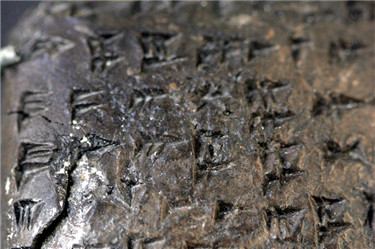
Photo credit: Rama
图片引自:Rama
7、Hurrian Civilization
胡里安文明
Another civilization which influenced the Hittites was the Hurrian people, who lived throughout the Middle East during the second millennium B.C. It’s probable that they were around even earlier than that: Personal and place names written in the Hurrian language were found in Mesopotamian records dating back to the third millennium B.C. Unfortunately, very few artifacts of their civilization exist; most of what we know about them comes from the writings of other cultures, including the Hittites, Sumerians, and Egyptians.
另一个对赫梯人产生过所影响的,是胡里安文明。胡里安人分布于中东地区,生活在公元前的第二个千年里(译注:即指公元前2000~公元前1000年)。他们或许在更早的时代就出现了:以胡里安语书写的人名和地名被发现存在于美索不达米亚的历史资料中,后者可追溯至公元前的第三个千年。不幸的是,只有非常少量的胡里安文明手工制品存在于世;我们对他们的所知主要源于 包括包括赫梯、苏美尔以及埃及在内的其他文明的记载。
One of their largest cities is known as Urkesh and is located in northeastern Syria. Urkesh is also where the earliest known text in Hurrian, a stone tablet and statue known as the Louvre lion, was found. Long believed to be mainly nomadic, scholars now believe that the Hurrians may have had a much bigger impact than previously thought, mostly due to the way their language differed from other Semitic and Indo-European tongues. However, by the end of the second millennium B.C., nearly all ethnic traces of the Hurrians had disappeared, with only their influence on the Hittites left behind.
胡里安人最大的城市之一是沃克什(Urkesh),坐落在今叙利亚北部。沃克什亦是胡里安最早的文本——一个石碑和被称为罗浮狮的雕像——的发现地。长期以来人们认为胡里安人以游牧为主。如今,学者们认为胡里安人所产生过的影响或许比我们原想的更大,主要基于其语言与其他闪米特和印欧语系语言差异的形式。无论如何,在公元前第二个世纪的末尾,胡里安民族的踪迹几乎全部消失,只剩他们对赫梯人的影响流传下去。
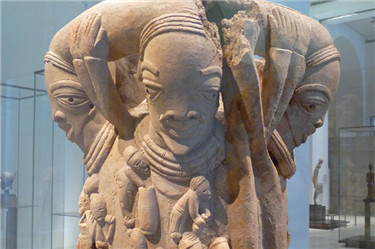
Photo credit: Ji-Elle
图片引自: Ji-Elle
6、Nok Civilization
诺克文明
Named after the area in Nigeria in which artifacts of their culture were first discovered, the Nok civilization flourished during the first millennium B.C.before fading into obscurity in the second century A.D. Some theories posit that the overexploitation of natural resources played a large role in the population’s decline. Whatever the case, scholars believe that they played an important role in the development of other cultures in the area, such as the Yoruba and Benin peoples.
以该文化的手工制品首先发现之地,尼日利亚某地的名字命名。诺克文明在公元前的第一个千年里持续繁荣,在公元2世纪逐渐没落、消失。一些理论假定,对自然资源的过度利用是导致其人口衰减的一个重要原因。无论如何,学者们认为该文明对这一地区的其他文化,如约鲁巴(Yoruba)和贝宁(Benin)的发展,起到了重要的作用,
Perhaps the best-known examples of their artistic nature are the terra-cotta figures which have been found throughout the area. They were also the earliest known Africans to have smelted iron, though it’s believed that it was introduced to them through another culture, perhaps the Carthaginians. The reason for this assumption is that no evidence for copper smelting has ever been found, which was a precursor to an iron age in nearly every other civilization. Although they’re believed to be one of the earliest African civilizations, evidence of their existence has been slow to come to light because modern-day Nigeria is a notoriously difficult place to study.
在该地区普遍发现的赤土陶俑(terra-cotta figures),或许是其艺术本质最为著名的示例。他们也是非洲人中已知最早可以炼铁的民族,虽然据信这是经由另一文化,或许是迦太基人(Carthaginians)所传授的。这一假定的原因是并没有发现过有关炼铜的证据,而后者在几乎其他所有的文明里都是铁器时代的先导。虽然诺克被认为是非洲最早的文明,但是关于其存在证据的发现则是十分缓慢的,因为当今的尼日利亚是一个声名狼藉的,难以开展研究的地方。
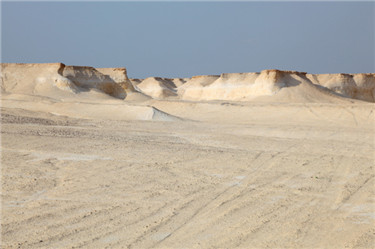
5、Punt Civilization
庞特文明
A popular trading partner with ancient Egypt, the land of Punt (pronounced “poont”) was famous for producing incense, ebony, and gold. Scholars differ on where they believe the civilization was, with a range from South Africa all the way up the coast to the Middle East. Even though the Egyptians wrote extensively on the land and its people, they never bothered to actually say where it was.
A lot of our knowledge of Punt comes from the reign of Hatshepsut, the famed female pharaoh who ruled Egypt during the 15th century B.C. Reliefs in her mortuary temple contain information on a rather large trade expedition to Punt, as well as more specific details, like pictures of beehive-shaped houses on stilts. A scene showing Hatshepsut receiving wondrous gifts from the exotic land is also carved into the temple walls. Unfortunately, no actual archaeological evidence showing the location of Punt has ever been found, although there have been numerous Egyptian artifacts inscribed with the civilization’s name, giving scholars hope that Punt might one day be unearthed.
作为古埃及的贸易伙伴,庞特以生产焚香、乌木和金子为主。学者对于文明的起源地有很大的争议,争议范围包括非洲南部到中东地区。即使埃及人详细地记叙了庞特文明和它的人民,也没有确定地描述庞特到底在哪里。很多关于庞特的记叙来自于公元前15世纪埃及著名的女法老哈特谢普苏特统治时期。在她神庙的浮雕上展示了与庞特大量繁华的贸易往来,还有一些特别的信息,比如蜂窝状的房子。神庙里,有一个浮雕展示了哈特谢普苏特从异邦获赠了大量的礼物。不幸的是,没有任何确切的考古证据表明庞特的位置,即便有大量的埃及艺术作品记录下了文明的名字,也给与学者一个希望,那就是庞特文明终有一天会被发现。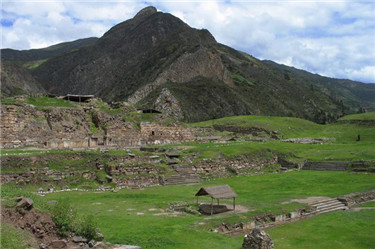
Photo credit: Sharon odb
4、Norte Chico Civilization
北方奇科文明
Beginning with its arrival during the third millennium B.C. and lasting for over 1,200 years, the Norte Chico civilization dominated South America as the oldest sophisticated culture on the continent. Named for the region of present-day Peru which they occupied, they had 20 major cities, with advanced architecture and agriculture making up a large portion of their settlements. They also developed intricate irrigation systems, sophistication which was unheard of in the Americas at that time.
Artifacts recognizable as religious symbols have been found throughout the area, especially near the stone pyramids for which the Norte Chico civilization is famous. There is some debate over whether or not they qualify as a civilization, as well as what that term even means. Usually, indicators like a form of art and a sense of urbanization are key, but the Norte Chico civilization possessed neither of these. Whatever the case, there is no denying that they were an influence on later South American cultures, such as the Chavin civilization, which began a few hundred years after the fall of the Norte Chicos.
从开始一直持续了1200年的北方奇科文明是南美洲大陆最古老的文明,今天秘鲁大部分国土都是他们曾经统治的地方,他们拥有20个城镇,先进的农业和建筑业技术。他们也开发出当时的美洲闻所未闻的复杂的灌溉系统。在整个区域发现了很多被当做宗教标记的工艺品,特别是在靠近以北方奇科文明著称的石头金字塔发现的更多。对于是否把他们当作一种文明仍然有一些争论,究竟文明这个词意味着什么。通常,艺术形式和城市化可以视作文明的标记,但是北方奇科文明没有这些标记。不管怎么说,不可否认的事他们对于后来的南美洲文明有着巨大的影响,比如恰文文明,恰文文明在北方奇科文明结束之后又持续了数百年。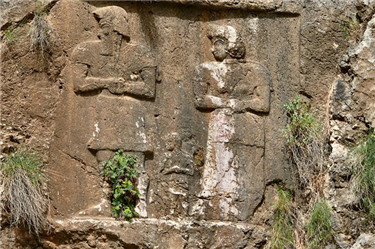
Photo credit: dynamosquito
图片引自:dynamosquito
3、Elamite Civilization
埃兰文明
Although their name for themselves was Haltam, the name “Elam” comes from the Hebraic transcription of the word. The Elamite civilization consisted mostly of land inside present-day Iran, along with a small portion of Iraq. One of the earliest civilizations, it was founded sometime in the third millennium B.C. and is by far the oldest in all of Iran. Situated along the borders of Sumer and Akkad, the land of Elam was similar to its neighbors, although its language was altogether unique.
“埃兰”这个名字来源于希伯来语单词的音标,尽管埃兰人称自己国家的名字为Haltam(意为“神的国家”)。埃兰文明主要在如今伊朗的境内,同时也包括了伊拉克的一小部分。它始建于大约公元前3000年,是最早的文明之一,也是目前整个伊朗最古老的文明。虽然埃兰的语言是完全独一无二的,但位于苏美尔和阿卡德的边界地带,埃兰的土地与它的邻国是相似的。
Although they lasted as an independent kingdom for at least a millennium, if not longer, very little is known about them because Elamite scribes were not concerned with documenting their mythology, literature, or any scientific advancements. Writing was mostly seen as a way to honor the king or perform administrative duties. Due to this fact, they made a rather small impact on the development of future civilizations, especially when compared to the Egyptians and Sumerians.
尽管作为一个独立的王国持续了至少千年,也可能更长的时间,但很少有人了解他们,因为埃兰的史官并不关心记录他们国家的神话,或者任何科学上的进步。书写在当时几乎被看做是一种尊敬国王或者是履行行政职责的方式。出于这个因素,他们对未来文明的发展造成的影响相当小,尤其是与埃及人和苏美尔人相比较。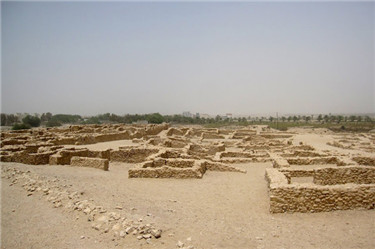
Photo credit: Rapid Travel Chai
图片引自:Rapid Travel Chai
2、Dilmun Civilization
两河流域文明
An important trading civilization in its heyday, Dilmun encompassed an area consisting of present-day Bahrain, Kuwait, and parts of Saudi Arabia. Although very little concrete evidence has been found as of yet, scholars believe that a few sites, namely Saar and Qal’at al-Bahrain, are ancient settlements of the Dilmun people. Saar is still being investigated, but a large number of the artifacts that have already been found there date to the third millennium B.C., lending credence to the theory that it was built by the Dilmun civilization.
两河流域在其鼎盛时期是一个重要的贸易文明,流经包括如今的巴林、科威特以及部分沙特阿拉伯地区,虽然迄今为止几乎没有发现什么具体的证据,但是学者们认为一些遗址,也就是萨尔和巴林岛的卡拉特考古遗址,是古代两河流域的人民定居的地方。萨尔仍然在被考古调查中,但是已经发现了大量追溯到公元前3000年的文物,印证了它始建于两河流域文明的传言。
Dilmun was a major commercial player in its day, with control over the Persian Gulf trading lanes and a communication network that reached as far away as Turkey. Numerous water springs flow all across the area, which researchers believe may have led to the legend of Bahrain being the Biblical Garden of Eden. In addition, Enki, the Sumerian god of wisdom, was said to have lived in the underground springs. Described as “the place where the sun rises,” Dilmun played a large role in Sumerian mythology; according to legend, Dilmun was the place where Utnapishtim was taken to live for eternity.
在两河流域文明盛行的时代,两河流域控制着波斯湾贸易通道和远至土耳其的通信网络,是一个主要的商业角色。许许多多的泉水流遍这个地区,研究者们认为这是传说中巴林后来成为了圣经中的伊甸园的依据。此外,据说苏美尔人的智慧之神恩基生活在地下的泉水中。两河流域在苏美尔的神话中有着举足轻重的地位,被描述为“太阳升起的地方”;根据传说,两河流域是乌特纳比西丁得到永生的地方。
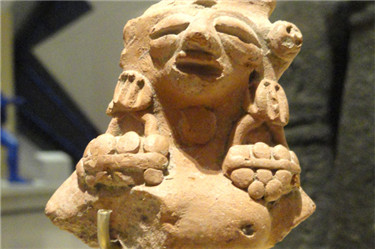
1、Harappan Civilization
哈拉帕文明
Also known as the Indus Valley Civilization, the Harappans were a group of people who lived in parts of present-day Pakistan and India. Gifted with the idea that planning cities in advance would be a good idea, their urban areas were second to none; unfortunately, due to what scientists believe to have been a massive, centuries-long drought, their culture slowly declined, never to rise again. This is currently nothing more than a theory, but it helps explain other cultural declines in the area as well.
也被称为印度河流域文明,哈拉帕人生活在今巴基斯坦和印度的部分地区。他们极有天赋的认为,良好的城市规划将是非常有益的,于是他们拥有不输任何文明的城市区域;很不幸的,基于科学家们所认为的,在经历了严重的、数个世纪之久的干旱之后,这个文化逐渐的没落了,并且再也没有复兴起来。这虽然不过是一个理论,但也的确有助于解释这一地区其他文明的衰落.
Beginning sometime in the 25th century B.C., the Harappans also developed their own language, a script with nearly 500 different characters which has not been completely deciphered even today. Their most noteworthy artifacts are seals, usually made of soapstone, which depict various animals and mythical creatures. Harappa and Mohenjo-Daro are the two largest Harappan sites, with the former labeled as a UNESCO Heritage Site. When it collapsed, the ruins of the Harappan civilization provided a template for the various other cultures which sprang up after it
哈拉帕文明始于公元前25世纪的某个时期,他们也发展出了自己的语言,一种有着近500个不同字符的文本,直到今天也未能完全破译。他们最著名的工艺品是密封印章,一般以皂石制成,其上绘有各种动物及神秘生物。哈拉帕及摩亨朱—达罗(Mohenjo-Daro)是哈拉帕人最大的两个据点,前者还是联合国教科文组织所认定的世界文化遗产。崩溃以后,哈拉帕文明的遗迹为其后涌现的诸多文明提供了样板。


